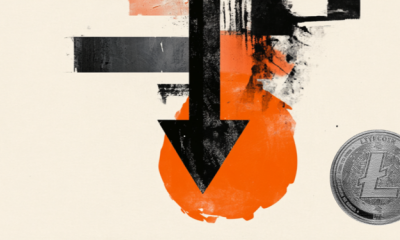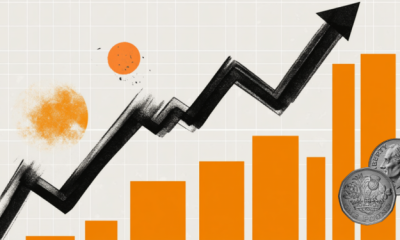

others
Japanese Yen hits highest level since 1980’s while interventions might not take place until Friday – Crypto News
- The Japanese Yen is giving up on 160.00 against USD.
- Traders are testing the Japanese Governmnent which might not take action until Friday.
- The US Dollar Index pops higher after some hawkish Fed comments.
The Japanese Yen (JPY) is retreating further and faces nearly 0.50% devaluation against the US Dollar on Wednesday after relentless hawkish comments from US Federal Reserve Official Michelle Bowman. Fed’s Bowman said that current conditions are not appropriate to start cutting and that she even conciders another rate hike before starting to cut. This in its turn feeds the US Dollar, making it strong enough to snap above 160.00 against the Yen and testing the Japanese Government’s line in the sand before facing interventions.
Breaking: Japanese Yen drops to multi-decade lows against US Dollar, eyes on BoJ
Meanwhile, the DXY US Dollar Index – which gauges the value of the US Dollar (USD) against a basket of six foreign currencies – is stronger with the help from the depreciation of the Japanese Yen. The other heavyweight in the basket, the Euro, is not helping either as uncertainty builds up ahead of the French snap elections on Sunday and German consumer confidence deteriorates further. This gives the DXY a boost from outside help even though the Greenback looks overvalued seeing recent economic data.
Daily digest market movers: Who will save the Yen?
- Gareth Berry, the FX and Rates strategist from Macquarie, is expecting the USD/JPY pair to fall to 120.00. This squeeze lower is expected to happen in the next 18 months, Bloomberg reports.
- Head of sales and trading business at Mitsubishi UFJ Trust and Banking Corporation Takafumi Onodera noted that the Japanese authorities will not intervene until Friday’s US Personal Consumption Expenditures (PCE) print. A stronger-than-expected report could spur volatility and send the Yen hurtling toward 163.00 against the US Dollar, spurring officials to make a “rate check” or intervene during a period of thin liquidity. Rate checks warn traders that authorities may be preparing to step in to support the Yen.
- At 11:00 GMT, the Mortgage Bankers Association (MBA) has released the weekly Mortgage Application numbers for the week ending on June 21. Mortgage applications rose by 0.9% the previous week and came in at 0.8% for this week.
- At 14:00 GMT, New Home Sales data for May will come out. Analysts expect sales to increase slightly to 640,000 from April’s 634,000.
- The US Treasury will allot a 5-year Note in the markets at 17:00 GMT.
- The Federal Reserve’s Bank Stress Test report will come out at 20:30 GMT.
- Equities are giving up their early recovery with both European and US indices smacking down as this Dollar strength is not being favored by investors.
- The CME Fedwatch Tool is broadly backing a rate cut in September despite recent comments from Fed officials. The odds now stand at 57.9% for a 25-basis-point cut. A rate pause stands at a 35.9% chance, while a 50-basis-point rate cut has a slim 6.2% possibility.
- The Overnight indexed Swap curve for Japan shows a 56.6% chance for a rate hike on July 31, and a smaller 49.6% chance for a hike on September 20.
- The US 10-year benchmark rate trades near the weekly high at 4.27%.
- The benchmark 10-year Japan Treasury Note (JGB) trades around 1.023%, breaking above 1% for the first time since June.
USD/JPY Technical Analysis: Yen lowest level since 1980’s
The USD/JPY pair is flashing red warning lights as price action overheats too much. The best evidence is the Relative Strength Index (RSI), which is close to overbought conditions in the daily chart, while the magic 160.00 level, where Japanese authorities intervened last time, is very near. Do not expect a snap reaction immediately, as authorities will want to see if US data on Thursday and Friday could trigger some easing without sticking their neck out and intervening. At max, 163.00 on the upside could be tested on stronger US data in the coming days, while on the downside, that 151.95 level is again the pivotal support to watch.
(This article was corrected on June 26, 12:19 GMT, to say that Japanese Yen printed multi-decade low versus the Dollar, not high.)
Banking crisis FAQs
The Banking Crisis of March 2023 occurred when three US-based banks with heavy exposure to the tech-sector and crypto suffered a spike in withdrawals that revealed severe weaknesses in their balance sheets, resulting in their insolvency. The most high profile of the banks was California-based Silicon Valley Bank (SVB) which experienced a surge in withdrawal requests due to a combination of customers fearing fallout from the FTX debacle, and substantially higher returns being offered elsewhere.
In order to fulfill the redemptions, Silicon Valley Bank had to sell its holdings of predominantly US Treasury bonds. Due to the rise in interest rates caused by the Federal Reserve’s rapid tightening measures, however, Treasury bonds had substantially fallen in value. The news that SVB had taken a $1.8B loss from the sale of its bonds triggered a panic and precipitated a full scale run on the bank that ended with the Federal Deposit Insurance Corporation (FDIC) having to take it over.The crisis spread to San-Francisco-based First Republic which ended up being rescued by a coordinated effort from a group of large US banks. On March 19, Credit Suisse in Switzerland fell foul after several years of poor performance and had to be taken over by UBS.
The Banking Crisis was negative for the US Dollar (USD) because it changed expectations about the future course of interest rates. Prior to the crisis investors had expected the Federal Reserve (Fed) to continue raising interest rates to combat persistently high inflation, however, once it became clear how much stress this was placing on the banking sector by devaluing bank holdings of US Treasury bonds, the expectation was the Fed would pause or even reverse its policy trajectory. Since higher interest rates are positive for the US Dollar, it fell as it discounted the possibility of a policy pivot.
The Banking Crisis was a bullish event for Gold. Firstly it benefited from demand due to its status as a safe-haven asset. Secondly, it led to investors expecting the Federal Reserve (Fed) to pause its aggressive rate-hiking policy, out of fear of the impact on the financial stability of the banking system – lower interest rate expectations reduced the opportunity cost of holding Gold. Thirdly, Gold, which is priced in US Dollars (XAU/USD), rose in value because the US Dollar weakened.
-

 Technology5 days ago
Technology5 days agoMeet Matt Deitke: 24-year-old AI whiz lured by Mark Zuckerberg with whopping $250 million offer – Crypto News
-
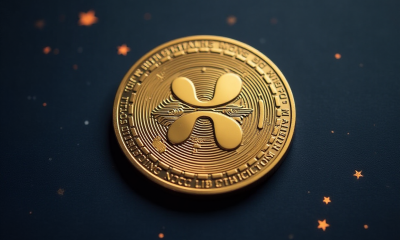
 Cryptocurrency6 days ago
Cryptocurrency6 days agoXRP inflows drop 95% since July spike, while Chaikin data signals possible rally – Crypto News
-

 Blockchain6 days ago
Blockchain6 days agoBank of America Sees Interest in Tokenization of Real-World Assets – Crypto News
-
others6 days ago
Breaking: Strategy Files $4.2 Billion STRC Offering To Buy More Bitcoin – Crypto News
-
others6 days ago
XRP NIGHT Token Airdrop: Snapshot, Claim Date and What to Expect? – Crypto News
-

 Blockchain5 days ago
Blockchain5 days agoAltcoin Rally To Commence When These 2 Signals Activate – Details – Crypto News
-

 Business1 week ago
Business1 week agoChase Launches $4 Million Grant Program as Restaurants Struggle – Crypto News
-

 Technology1 week ago
Technology1 week agoIs AI causing tech worker layoffs? Thats what CEOs suggest, but the reality is complicated – Crypto News
-
others7 days ago
Ripple Swell 2025: Top Speakers and Panelists to Watch this November – Crypto News
-

 Blockchain7 days ago
Blockchain7 days agoSEC Crypto ETFs Ruling Brings Structural Fix, Not Retail Shakeup – Crypto News
-
Business7 days ago
Breaking: Solana ETFs Near Launch as Issuers Update S-1s With Fund Fees – Crypto News
-

 Technology6 days ago
Technology6 days agoOppo K13 Turbo series confirmed to launch in India with in-built fan technology: Price, specs and everything expected – Crypto News
-
Cryptocurrency4 days ago
Cardano’s NIGHT Airdrop to Hit 2.2M XRP Wallets — Find Out How Much You Can Get – Crypto News
-
Business1 week ago
Breaking: US SEC Delays Launch Of Truth Social’s Bitcoin ETF And Grayscale’s Solana ETF – Crypto News
-
others1 week ago
Why Does Jim Cramer Think the Market’s Slow Pace is Actually Good Sign? – Crypto News
-
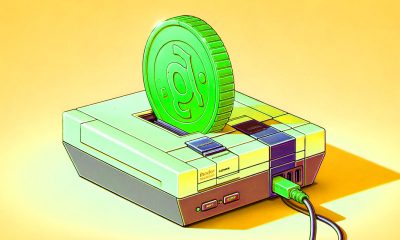
 others1 week ago
others1 week agoBlockchain Gaming Is Growing Up – What’s Behind the Sector’s Quiet Comeback – Crypto News
-
Business1 week ago
Stablecoins Won’t Boost Treasury Demand, Peter Schiff Warns – Crypto News
-
Business5 days ago
Bitpanda Co-Founder & Co-CEO Paul Klanschek Steps Down as Firm Eyes Frankfurt IPO – Crypto News
-
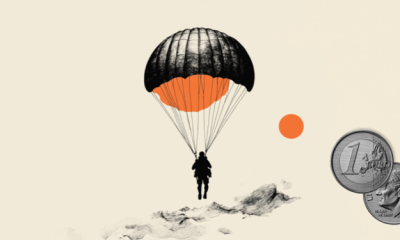
 others1 week ago
others1 week agoEUR/USD dives as the US Dollar outperforms with all eyes on the Fed decision – Crypto News
-
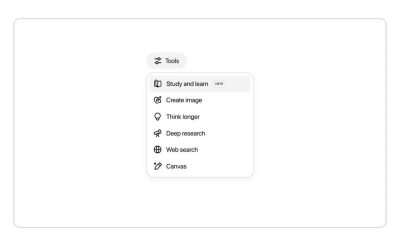
 Metaverse1 week ago
Metaverse1 week agoOpenAI rolls out ‘Study Mode’ in ChatGPT: What is it? How to use? All your questions answered… – Crypto News
-
Technology1 week ago
Breaking: BlackRock’s Ethereum ETF Staking Proposal Advances As SEC Acknowledges Filing – Crypto News
-
Technology1 week ago
Ethereum Price Prediction- Bulls Target $5,400 Amid DeFi Revival and Soaring TVL – Crypto News
-
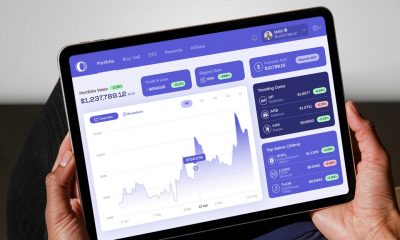
 Technology1 week ago
Technology1 week agoCoinbase exchange targets alleged cybersquatter in lawsuit – Crypto News
-

 De-fi7 days ago
De-fi7 days agoWhite House Crypto Report Recommends Expanding CFTC’s Role in Crypto Regulation – Crypto News
-
Technology7 days ago
Coinbase to Offer Tokenized Stocks and Prediction Markets in U.S. – Crypto News
-
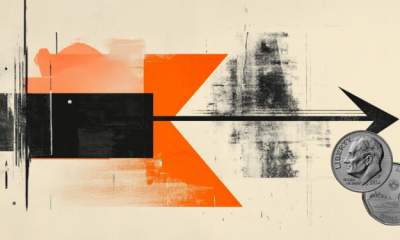
 others6 days ago
others6 days agoCanadian Dollar under pressure amid weak GDP, Trump tariff threat, and strong US data – Crypto News
-

 Technology6 days ago
Technology6 days agoBig Tech’s Big Bet on AI Driving $344 Billion in Spend This Year – Crypto News
-
Cryptocurrency6 days ago
CME XRP Futures Hit Record Highs in July Amid ETF Approval Optimism – Crypto News
-
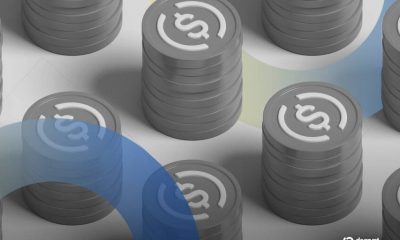
 Cryptocurrency5 days ago
Cryptocurrency5 days agoStablecoins Are Finally Legal—Now Comes the Hard Part – Crypto News
-
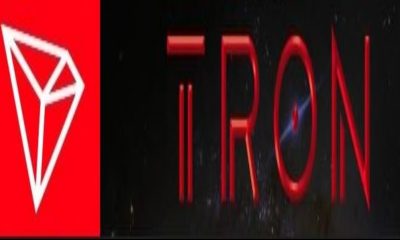
 Cryptocurrency5 days ago
Cryptocurrency5 days agoTron Eyes 40% Surge as Whales Pile In – Crypto News
-

 Cryptocurrency4 days ago
Cryptocurrency4 days agoEthereum Hits Major 2025 Year Peak Despite Price Dropping to $3,500 – Crypto News
-
Technology4 days ago
Beyond Billboards: Why Crypto’s Future Depends on Smarter Sports Sponsorships – Crypto News
-

 others1 week ago
others1 week agoIs your IRA ready for the next Fed interest rate decision? – Crypto News
-
Technology1 week ago
Just In: $111B Brokerage Giant Interactive Brokers Explores Stablecoin for Funding – Crypto News
-
others1 week ago
Breaking: PayPal to Let Merchants Accept Payments in Over 100 Cryptocurrencies – Crypto News
-

 Blockchain1 week ago
Blockchain1 week agoSEC Gives Green Light to In-Kind Transactions for Crypto ETPs – Crypto News
-

 Technology1 week ago
Technology1 week agoSpotify hits 276M subscribers and strong user growth in Q2, but revenue and profit fall short of targets – Crypto News
-

 Cryptocurrency1 week ago
Cryptocurrency1 week agoAltcoins update: Dogecoin and Injective signal recoveries as Ethereum eyes $4,000 – Crypto News
-

 Technology7 days ago
Technology7 days agoSolana DEX volume dips 20% after co-founder slams meme coins – Crypto News
-

 Technology6 days ago
Technology6 days agoTim Cook confirms Apple will ramp up AI spending, ‘open’ to acquisitions – Crypto News
-

 Technology6 days ago
Technology6 days agoOppo K13 Turbo series confirmed to launch in India with in-built fan technology: Price, specs and everything expected – Crypto News
-
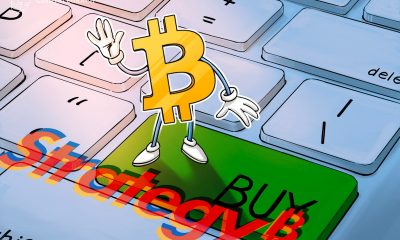
 Blockchain6 days ago
Blockchain6 days agoStrategy Expands STRC Offering Twice in One Week – Crypto News
-
Technology5 days ago
Will The First Spot XRP ETF Launch This Month? SEC Provides Update On Grayscale’s Fund – Crypto News
-

 Technology5 days ago
Technology5 days agoAmazon Great Freedom Sale deals on smartwatches: Up to 70% off on Samsung, Apple and more – Crypto News
-
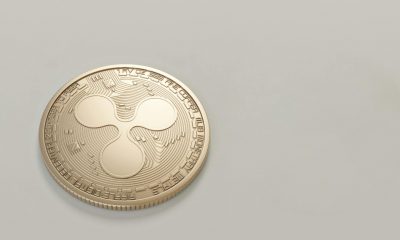
 Blockchain4 days ago
Blockchain4 days agoXRP Must Hold $2.65 Support Or Risk Major Breakdown – Analyst – Crypto News
-

 Blockchain4 days ago
Blockchain4 days agoXRP Must Hold $2.65 Support Or Risk Major Breakdown – Analyst – Crypto News
-
Business4 days ago
Is Quantum Computing A Threat for Bitcoin- Elon Musk Asks Grok – Crypto News
-
Business1 week ago
Breaking: CBOE Files For Rule Change To List Crypto ETFs Without SEC Approval – Crypto News
-

 others1 week ago
others1 week agoGold slides below $3,300 as traders await Fed policy decision – Crypto News
-

 others1 week ago
others1 week agoGold slides below $3,300 as traders await Fed policy decision – Crypto News

